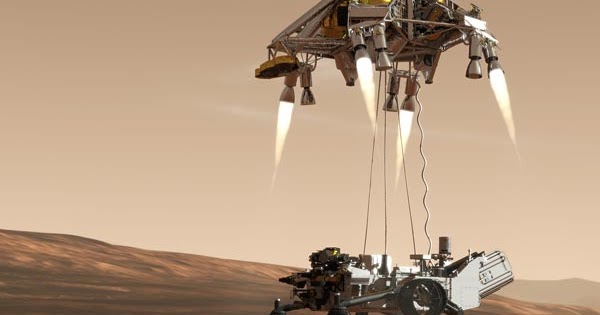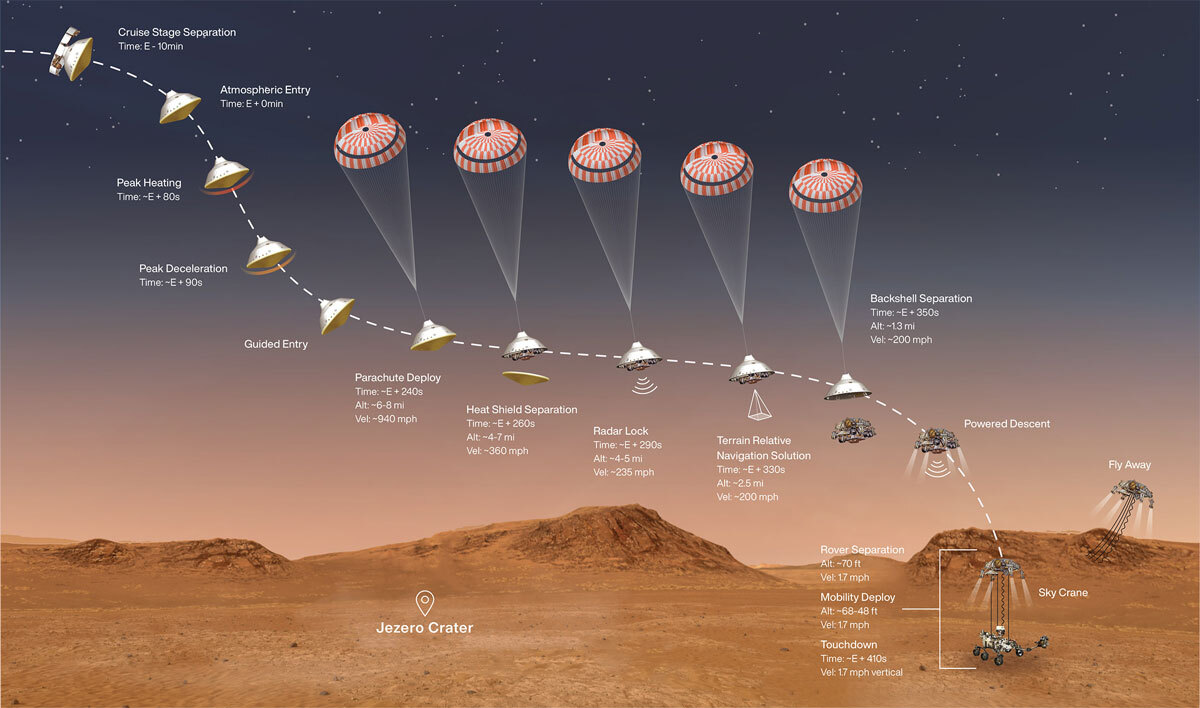
The rover will also collect samples that NASA hopes to return to Earth using a future joint mission with the European Space Agency. The rover hangs over Jezero Crater, the site that NASA selected for its latest Mars landing. It also carries a ground-penetrating radar to study the subsurface geology of the region and an experiment designed to produce oxygen from Martian carbon dioxide - a proof of concept of a technology that would likely be a key component of any future crewed Mars missions. Perseverance's life-hunting mission means that the rover is more or less a $2.7 billion nuclear-powered geologist, carrying a big toolbelt of instruments to precisely observe the compounds present in the crater's minerals, looking for signs of ancient life. The Nasa robot has collected a diverse set of rock samples that it will soon deposit on the. Related: Photo tour of Jezero Crater: Here's where Perseverance will land on Mars The US space agencys Perseverance rover is close to completing its first set of objectives on Mars. brings you the latest images, videos and news from Americas space agency. The large video files may take up to a week to fully upload across interplanetary space, NASA said. What has NASA's Perseverance rover accomplished since landing on the surface of Mars in February 2021 Surface Operations Mission Manager Jessica Samuels ref. The 10 aerial color photos feature both the parachute that aided the roughly 2.5 billion rover's landing, as well as the cone-shaped backshell that protected it during its intense descent to the.

NASA mounted cameras and a microphone on the descent vehicle and rover to record the landing. Helicopter: The Mars Helicopter completed its 30-day technology demonstration and continues in its operations demo phase.


Perseverance hasn't yet sent any images home, though they should be coming in the following hours and days. Mars Perseverance Sol 879 - WATSON Camera: NASA's Mars Perseverance rover acquired this image using its SHERLOC WATSON camera, located on the turret at the end of the rover's robotic arm. Main Job: Seek signs of ancient life and collect samples of rock and regolith (broken rock and soil) for possible return to Earth.


 0 kommentar(er)
0 kommentar(er)
